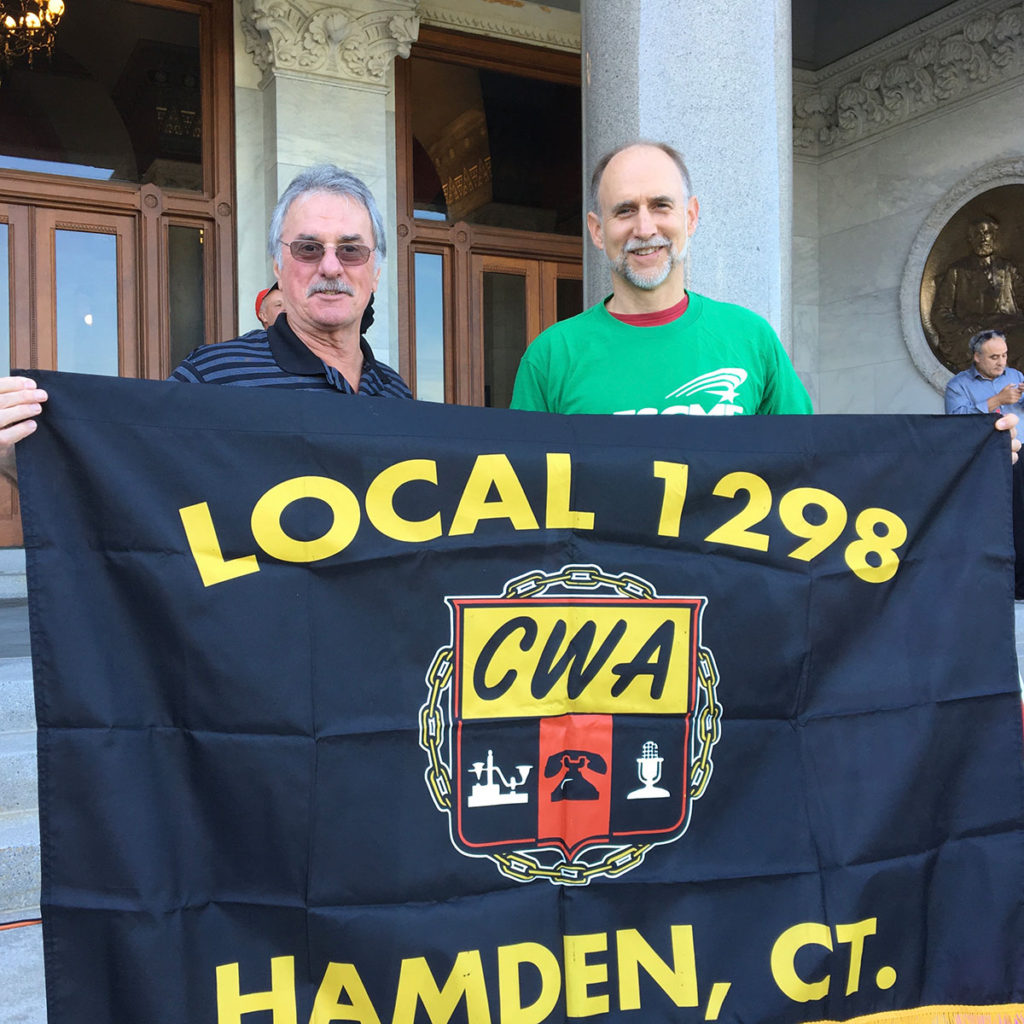
by Renee Hamel and Dan McInerney
As published on April 28, 2022 in Connecticut Post
The American economy is driven by American workers. In Connecticut, many areas of employment have organized labor and fill our unions with bright, hardworking individuals dedicated to moving the state forward and securing a better future for all residents.
However, we still aren’t moving fast enough when it comes to our economic transition toward a green-collar workforce. It is important for labor to lead on climate now. This process begins with individual workers, mainly union members, taking action and organizing around environmental issues.
Labor unions are a powerful political force that can advance environmental protection for the benefit of workers and society as a whole. An initiative of the ILR Worker Institute at Cornell, in partnership with Climate Jobs National Resource Center, “Labor Leading on Climate,” proves that when organized labor leads on an issue like climate change, the outcome is a thriving economy. According to the International Labour Organization the creation of 24 million new jobs is also something that cannot be ignored. The challenge for individual workers, however, is that it isn’t always clear what they can do to advance a clean energy transition in ways that are meaningful and sustainable.
Labor unions and their members can be a driving force of a transition to a clean-energy economy. Sometimes, unions and their members already do this when they advocate for improved workplace conditions. For example, bus drivers can advocate for electric buses to reduce both their exposure to harmful diesel exhaust and air pollution in the communities they serve. Health care professionals can advocate for air pollution reduction measures that can limit asthma prevalence. Educators can present concepts of sustainability to their students and can introduce older students to “green-collar” careers to prepare them for work in the low-carbon economy of the future.
The building trades can rally around clean infrastructure investments. For example, electricians benefit from increased electric vehicle charging installations that are beneficial for the electrification of buildings and industry whereas pipefitters can benefit from geothermal energy projects. State and municipal employees can advocate internally for Lead by Example programs and publicize what their agencies or departments have learned to help businesses and residents transition away from fossil fuels. Manufacturers can seek new opportunities in renewable energy such as manufacturing parts for the Northeast’s emerging offshore wind industry.
The opportunities for unions and their members to engage in environmental advocacy in ways that benefit both workers and the environment are abundant. Workers should not fear a transition to a clean energy economy. While fighting climate change seems like an insurmountable feat, it is also one that shouldn’t be delayed any further. The time to act is now and organized labor can and should take the lead on this issue.
Renee Hamel is the communications coordinator for Council 4 AFSCME. She is vice chair of Connecticut Roundtable on Climate and Jobs.
Dan McInerney is the business manager and financial secretary of IBEW Local 488. He is also a aboard member of Connecticut Roundtable on Climate and Jobs.
Read the original on Connecticut Post’s website.
©2022 Hearst
